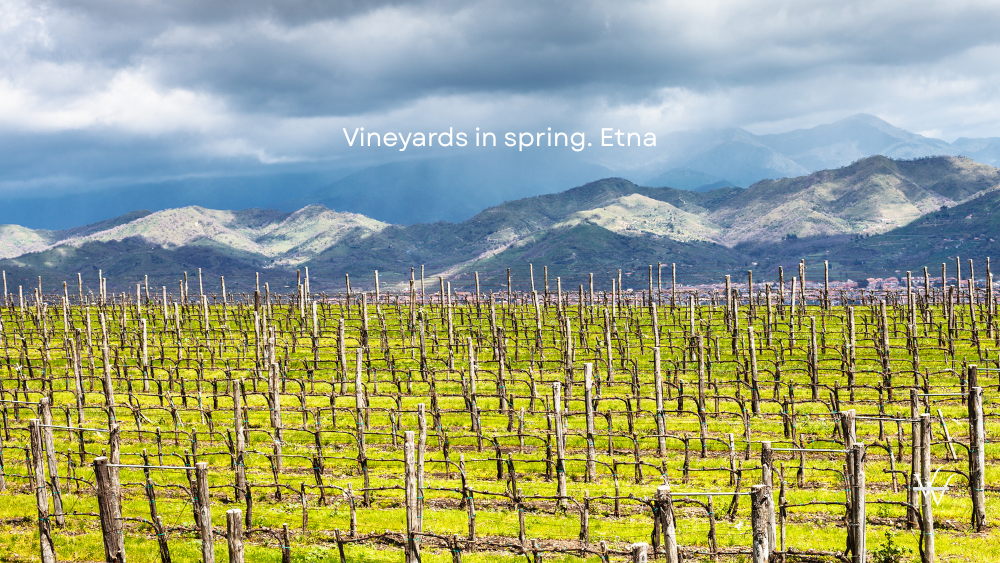After a challenging 2023 harvest, the Etna DOC appellation in Sicily has marked a significant recovery in 2024, according to data presented by the Etna DOC Vini Protection Consortium during Etna Days 2025.
The total registered vineyard area expanded from 1,147 hectares to 1,347 hectares, showing renewed interest and confidence in this volcanic wine territory. A total of 474 winegrowers contributed to a production volume exceeding 58,000 hectoliters, a 69.7% year-on-year increase compared to 2023.
Despite this overall rebound, the performance varied among wine types. Etna Bianco, the second-largest category, saw a 16% decline, producing under 15,000 hectoliters, while Etna Bianco Superiore dropped by 12.17%. Etna Rosato experienced the sharpest fall—43.51%, from 3,400 hectoliters in 2023 to under 2,000 hectoliters in 2024. Meanwhile, Etna Rosso, the appellation’s flagship wine, remained stable with nearly 20,000 hectoliters and only a 5.9% decrease.
The most notable growth came from sparkling wines: Etna Spumante Bianco increased by 7.9%, while Etna Spumante Rosato surged by 75.28%, confirming growing enthusiasm for Nerello Mascalese–based sparkling wines.
Total bottled production in 2024 reached approximately 40,000 hectoliters, a decline of 11.98% compared to 2023, but still within the historical average for the denomination. The Consortium emphasized that the recovery trend is evident and expressed optimism for 2025.
On the export front, Etna wines continue to gain international acclaim. The United States remains the leading market, absorbing roughly 25% of total production, followed by Germany, the United Kingdom, Switzerland, and the Nordic countries. More than 70% of certified production is exported, positioning Etna wines among the premium European appellations.
Producers report stable demand in the U.S. despite tariff challenges. Giulia Monteleone of Monteleone Winery expects record sales this year, noting that wines priced from USD 10 (EUR 9.3) and up have been less affected by tariffs. Jacopo Maniaci of Tenuta di Fessina explains that strategic price adjustments and higher volumes helped offset the impact.
Other producers, including Christian Liistro of Tenuta delle Terre Nere and Emanuele Mazzoleni of Custodi delle Vigne dell’Etna, confirm that U.S. consumers have tolerated moderate price increases, while Federico Graziani believes Etna wines stand out for their modern character and territorial expression.
According to Rossella Marino Abate of Firriato and Manuela Seminara of Tenute Ballasanti, maintaining strong ties with importers and consumers is essential. Gina Russo of Russo Winery adds that market stability will persist if tariffs remain unchanged.
Several producers are exploring new export markets. Rossella Marino Abate reports rising interest in Japan and Germany, while Manuela Seminara highlights Central America and Asia. Maria Ausilia Borzì of Serafica confirms growing contacts from Korea, and Giacomo Bardazzi of Frank Cornelissen identifies Brazil as a promising destination.
The Piccini Group, active in 35 countries, views Asian markets as particularly promising. Salvino Benanti of Cantina Benanti also underlined the attention received from South American and Asian buyers during Vinitaly. Gina Russo and Giulia Monteleone further mention rising interest in Northern Europe and Latin America, especially after the Mercosur agreement.
In Australia and Southeast Asia, wineries such as Tenuta di Fessina and Tenuta delle Terre Nere report positive early results, while Emanuele Mazzoleni highlights Northern Europe and Quebec as key future markets. In France, Federico Graziani has found receptive consumers drawn to stylistic similarities between Etna and French wines. Meanwhile, Carla Maugeri of Cantina Maugeri celebrates new partnerships in Peru, Portugal, and Poland.
Despite temporary challenges, the Etna DOC demonstrates resilience, adaptability, and global appeal, confirming its position as one of Italy’s most dynamic wine regions.
Source: Vinetur

